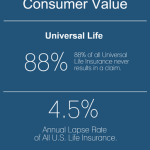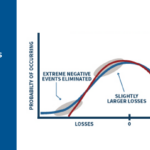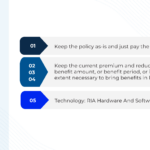
The classic view of life insurance is that it is purchased as long as needed or desired, and then lapsed (or if there's any cash value, surrendered) when it is no longer necessary. Term insurance policies are usually expected to lapse, and in practice even "permanent" insurance often ends out being surrendered before it is ever paid out as a death claim.
Technically, though, there is a third option to the "keep versus lapse" decision of life insurance: to sell the policy to a third party in a transaction called a "life settlement" to an (institutional) investor who might be willing to pay more than just the policy's cash value (or the $0 value that might be available if the coverage just lapses on its own). After all, in the hands of an investor, a life insurance policy is simply an "investment" that has ongoing cash flow requirements (premiums) but will eventually mature as a (much larger) death benefit later. So as long as the time horizon is "reasonable", the policy can actually have a remarkably appealing implied rate of return to an investor, for which the current policyowner can be paid!
In this guest post, Lingke Wang - co-founder of Ovid Life, a technology firm aiming to create a centralized transparent marketplace for life settlements transactions - provides a "Financial Advisor's Guide To Life Settlements" with a detailed review of the life settlement industry, what a life settlement provider is and how life settlements operate, and the mechanics of how an investor evaluates a prospective life settlement contract purchase (which is important to understand for any policyowner who might be selling their life insurance policy!).
Ironically, the biggest caveat of engaging in a life settlement is the reality that any life settlement policy worth selling to an investor is worth even more in the long run for the policyowner to just keep themselves, where the internal rate of return will be even more appealing (since the investor has both transaction costs to acquire the policy, and does not enjoy the death benefit tax free as the original policyowner would). Nonetheless, that appealing internal rate of return for keeping a permanent life insurance policy only applies by continuing to maintain the policy, including ongoing premiums. So for a policyowner who simply doesn't want to - or can't afford to - keep the policy in the first place, a life settlement may still be a more appealing exit than just letting the policy lapse away!




